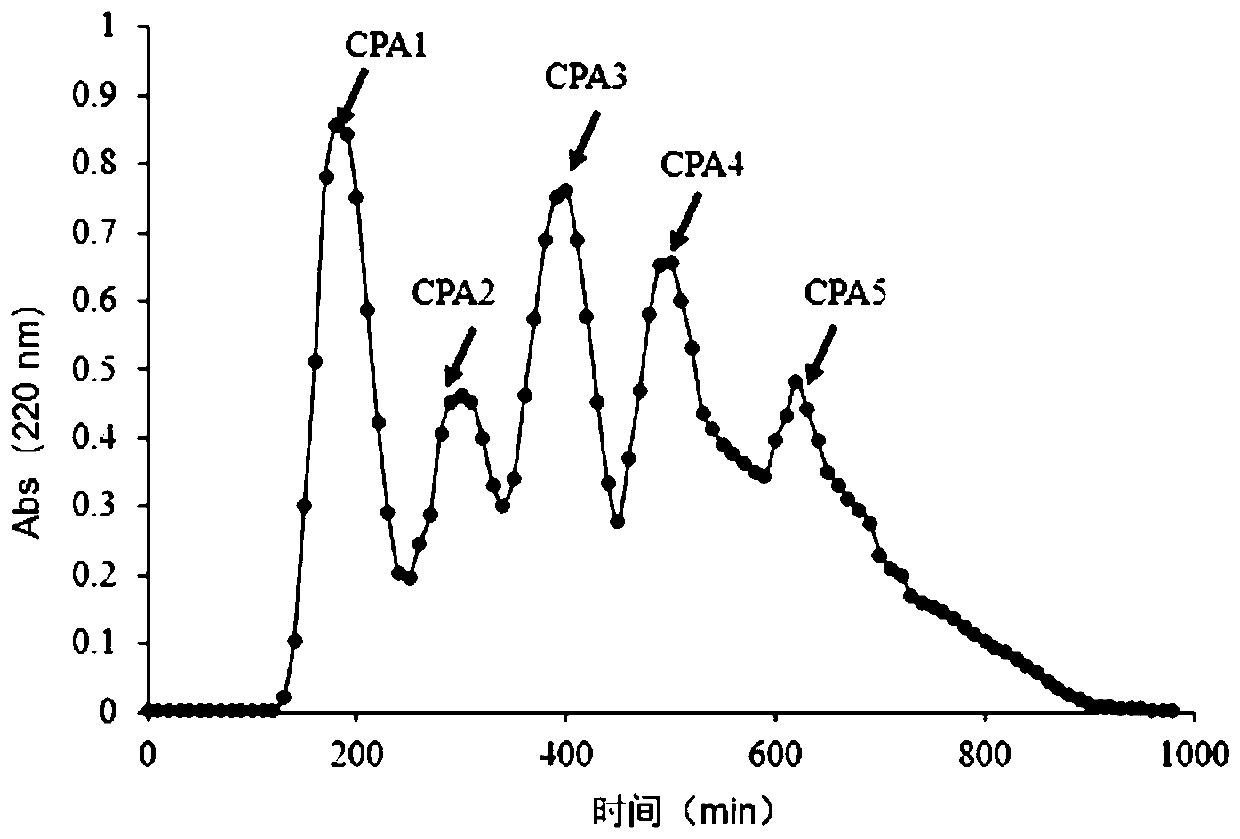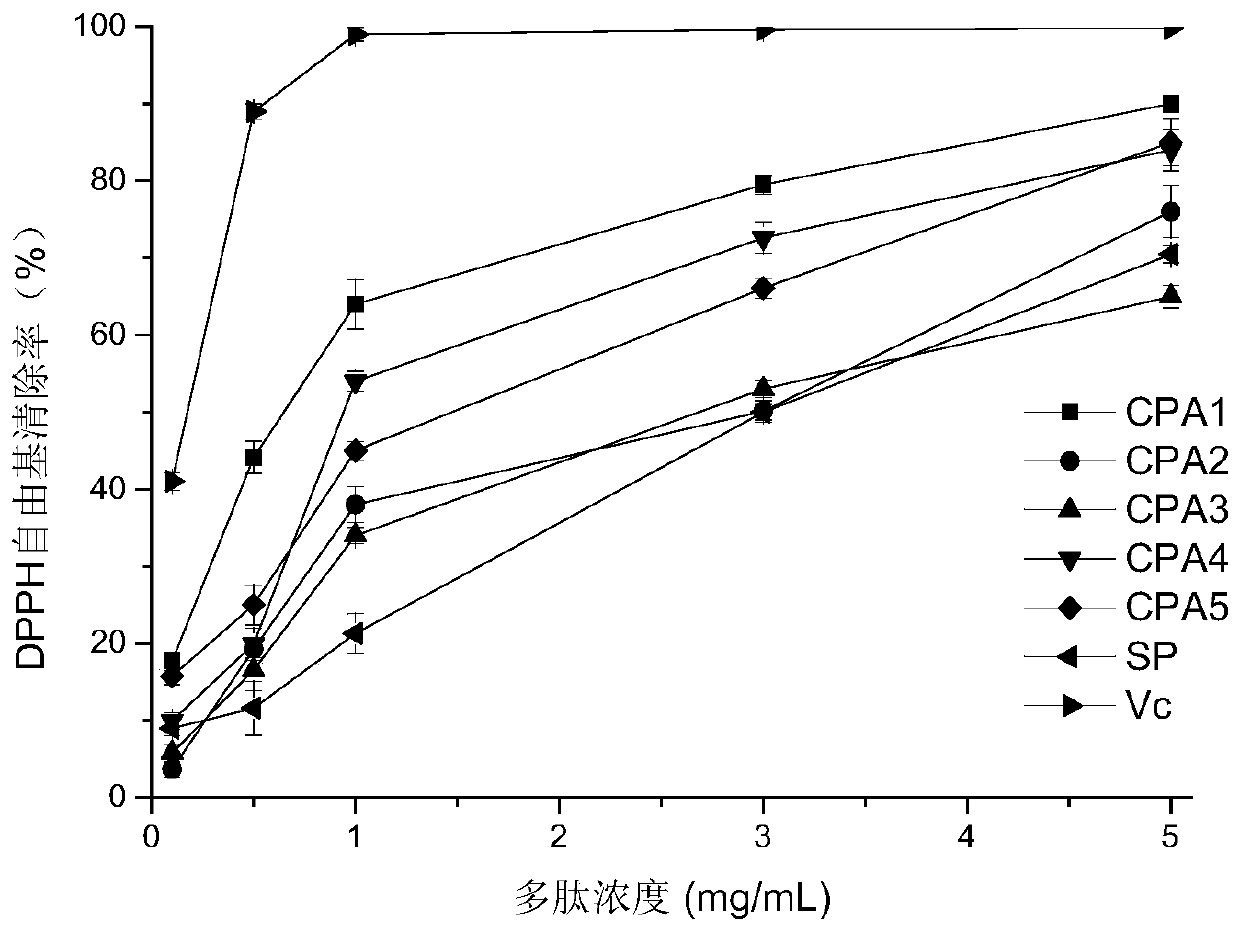Antioxidant selenium polypeptide derived from pennsylvania bittercress herb and preparation method thereof
A technology of broken orchidna and anti-oxidation, which is applied in the biological field, can solve the problems of low selenium content and difficulty in supplementing selenium adequately, and achieve the effect of eliminating side effects
- Summary
- Abstract
- Description
- Claims
- Application Information
AI Technical Summary
Problems solved by technology
Method used
Image
Examples
Embodiment 1
[0025] (1) Enzymolysis of Viola Leaf Broken Camelina
[0026] Dry and powder the whole plant of the broken rice chestnut, decolorize with absolute ethanol for 2 hours, centrifuge at 6400r / min for 15 minutes, air-dry the precipitate, add an alkaline solution with a pH of 8.5 according to a solid-liquid ratio of 1:40g / ml, and add alkaline protease to The crushed rice chestnut powder is subjected to enzymolysis at a temperature of 50°C, the enzymolysis time is 4h, and the enzyme-substrate ratio is 4000U / g, then acid protease is added at a temperature of 50°C, the enzymolysis time is 4h, and the enzyme-substrate ratio is 4000U / g. The proportion is 3000U / g. Inactivate the enzyme in a boiling water bath for 15 minutes, then rapidly cool down to room temperature, place in a centrifuge, centrifuge at 6400r / min for 15 minutes, take the supernatant and dry it, and obtain the crude extract of Selenium Peptide from Broken Camelina.
[0027] (2) Separation of enzymatic hydrolysis products...
Embodiment 2
[0050] The in vivo antioxidant activity of the natural antioxidant selenopolypeptide obtained in Example 1 was studied through a D-galactose-induced aging mouse model.
[0051] Select 60 ICR male mice and keep them in the breeding room with indoor humidity of 60±5% and ambient temperature of 23±2°C, with 12h alternating cycle of light and dark, during which the mice drink water and eat freely. The mice were fed adaptively for 7 days in the early stage, and then the mice were divided into 6 groups according to the random number table method: the aging model group, the blank control group, the selenoprotein group, the low-dose selenopolypeptide group of the broken rice chestnut, and the medium-dose group of the selenopolypeptide of the broken rice group, high-dose group of crushed orina selenopeptide. Dosage design basis: if the daily intake of adults (body weight 50kg) is 100 μg (calculated as selenium), the daily intake of mice in the middle dose group is 20 μg / kg BW, which is...
PUM
 Login to View More
Login to View More Abstract
Description
Claims
Application Information
 Login to View More
Login to View More - R&D
- Intellectual Property
- Life Sciences
- Materials
- Tech Scout
- Unparalleled Data Quality
- Higher Quality Content
- 60% Fewer Hallucinations
Browse by: Latest US Patents, China's latest patents, Technical Efficacy Thesaurus, Application Domain, Technology Topic, Popular Technical Reports.
© 2025 PatSnap. All rights reserved.Legal|Privacy policy|Modern Slavery Act Transparency Statement|Sitemap|About US| Contact US: help@patsnap.com



